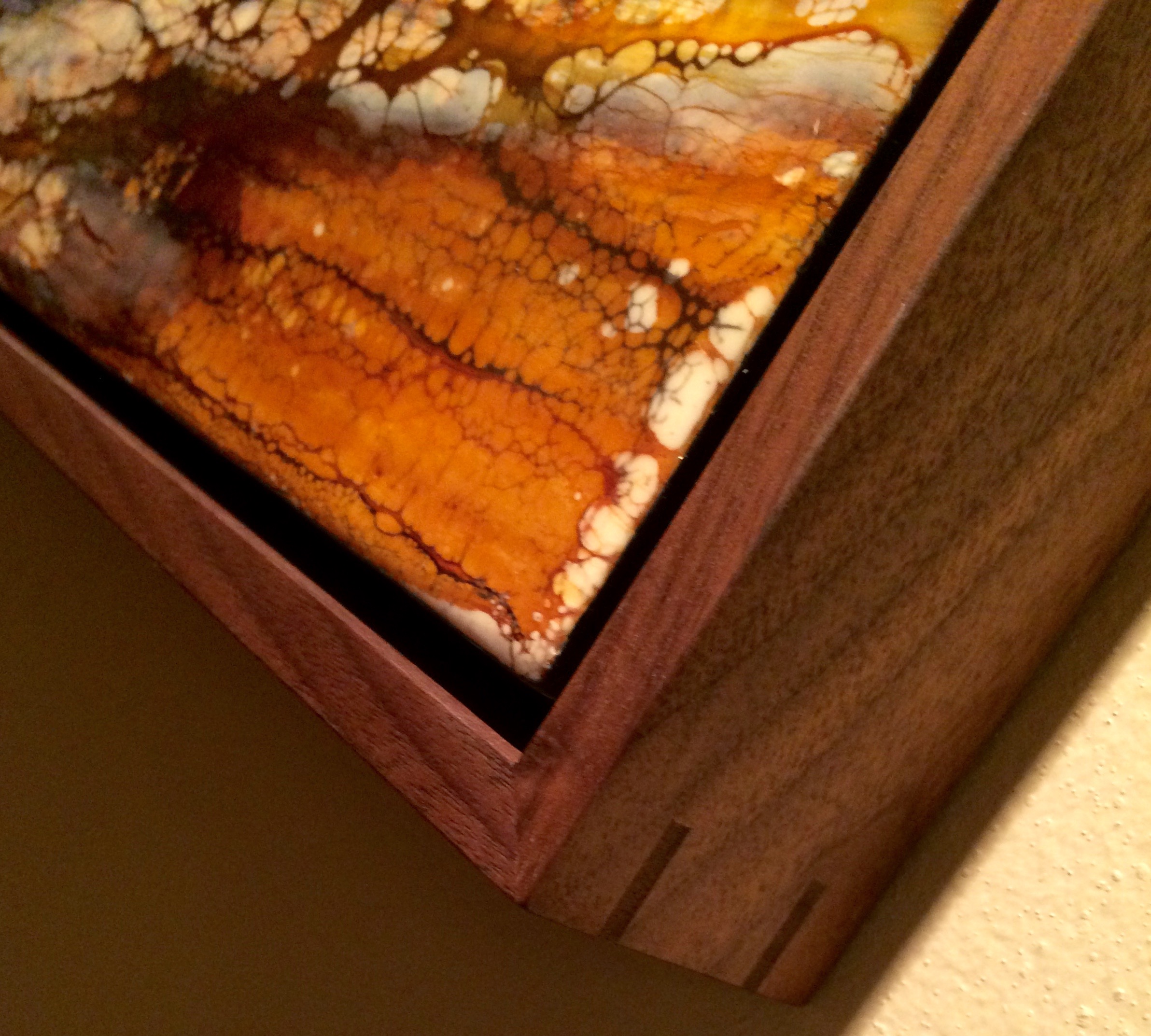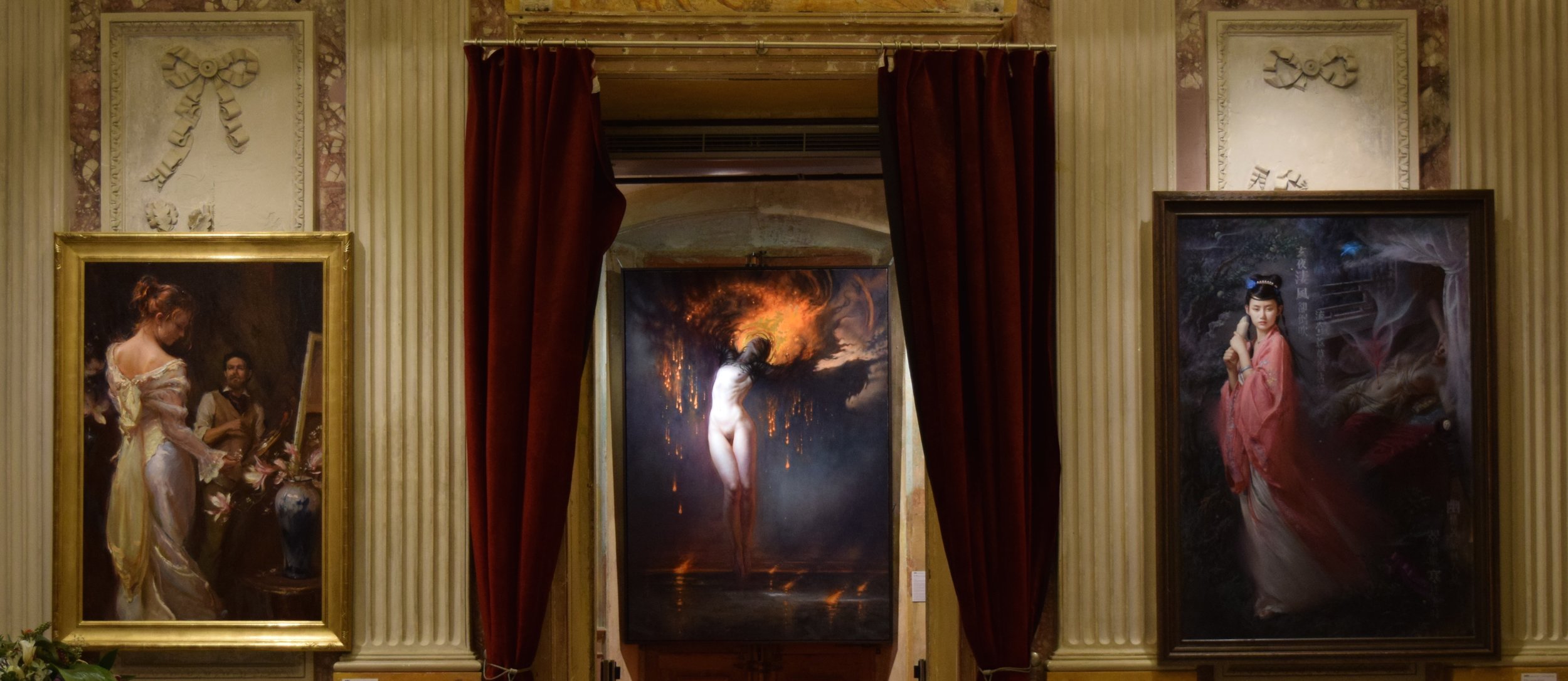We recently framed a single vellum page of an illuminated manuscript from the late 1400s, France. The piece offered a new array of framing challenges. It required viewable presentation of both sides as well as protection from damaging UV rays and from the atmospheric moisture of the Northwest.
A preliminary sketch shows a first attempt at solving some of these problems. Such sketches allow the client to better visualize the project and to offer suggestions of refinement.
Dry vellum, or animal hide, is notoriously hygroscopic, and when exposed to moisture it harbors the potential for catastrophic buckling and the development of mold. Ambient moisture condenses where there is a differential between the temperature of the air and the surface that air contacts. Glass usually has a greater differential than plexiglass, so we chose a UV protective plex for this frame. We spaced the piece 3/8 inches deep, keeping the vellum a safe distance from the interior surface of the glazing. The piece came to us pre-matted, so to match the antique white tone, the interior walls of the frame were coated with an artist-grade acrylic paint. (We apologize for the glare -- while expedient, phone cameras do not offer the anti-glare capability of proper lighting and polarized filters.)
It would have been tempting to overwhelm this piece with an ornate frame, with gilding and the rolling scrollwork and sgraffito often seen in older tabernacle frames. We chose a simple oiled-cherry profile with a weighted pediment and walnut splines that paid tribute to historical precedent but also maintained the clean simple lines of today’s aesthetic.


































